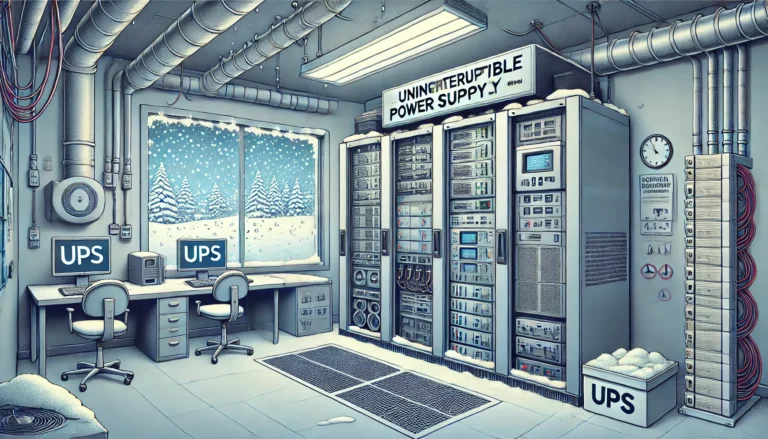
In today’s fast-paced digital world, ensuring uninterrupted power for critical systems is more important than ever. During extreme weather conditions like snowbreaks, the functionality and placement of an snowbreak locate uninterruptible power supply become paramount. A well-located UPS can save vital equipment from power surges, outages, and voltage inconsistencies.
What Is an Uninterruptible Power Supply (UPS)?
A UPS is a backup power system designed to provide temporary power to electronic devices during outages. It safeguards against data loss and damage to sensitive equipment caused by sudden power interruptions. UPS systems are vital in various environments, including homes, offices, and data centers.
Why Proper Placement of a UPS Matters in a Snowbreak
Snowbreaks, characterized by heavy snowfall and freezing temperatures, pose unique challenges. Power outages are common, and voltage fluctuations can damage essential systems. A strategically placed UPS ensures:
- Continuous Power Supply: Protects critical devices like servers, medical equipment, and communication tools.
- Equipment Longevity: Minimizes the risk of damage caused by unstable power.
- Operational Efficiency: Maintains productivity during power disruptions.
To maximize these benefits, understanding where and how to locate a UPS during a snowbreak is essential.
Factors to Consider When Locating a UPS
1. Temperature Stability
Extreme cold can negatively impact the performance and lifespan of UPS batteries. Place the UPS in a location where the temperature remains within the manufacturer-recommended range, typically between 20°C and 25°C (68°F and 77°F). Avoid areas exposed to direct cold drafts or excessive heat.
2. Accessibility
The UPS should be easily accessible for monitoring and maintenance. During a snowbreak, quick access is vital for troubleshooting or replacing batteries. Consider placing the UPS in a dedicated utility room or an accessible corner of the office.
3. Protection from Moisture
Snowbreaks can lead to water seepage in buildings. Ensure the UPS is positioned above ground level to prevent water damage. Use a waterproof enclosure if necessary, especially in basements or areas prone to flooding.
4. Proximity to Load
Locate the UPS as close as possible to the equipment it powers. This minimizes power loss due to voltage drop and reduces the risk of cable damage during severe weather.
5. Ventilation
Proper ventilation prevents overheating and ensures the efficient operation of the UPS. Keep the surrounding area clear of obstructions to maintain airflow. Avoid placing the UPS in cramped spaces or against walls.
Step-by-Step Guide to Locating a UPS in a Snowbreak
Step 1: Assess Your Power Needs
Determine the total load of the devices you plan to connect to the UPS. Choose a UPS model with sufficient capacity to handle the load during a power outage.
Step 2: Select the Right UPS Type
There are several types of UPS systems, including:
- Standby UPS: Ideal for small setups with minimal power requirements.
- Line-Interactive UPS: Suitable for moderate power needs, offering voltage regulation.
- Online UPS: Recommended for critical systems requiring uninterrupted power and zero transfer time.
Choose a UPS type that aligns with your operational needs and budget.
Step 3: Choose the Ideal Location
Identify a location that meets the following criteria:
- Dry and Elevated: Protects the UPS from potential flooding.
- Temperature-Controlled: Ensures optimal battery performance.
- Near Power Sources: Simplifies installation and reduces cable lengths.
Step 4: Install Surge Protection
Even with a UPS, surge protection is crucial during a snowbreak. Use surge protectors on the input side to safeguard the UPS and connected devices from power spikes.
Step 5: Conduct Regular Maintenance
Inspect the UPS regularly to ensure it remains operational. Check for:
- Battery health
- Proper connections
- Clean vents and dust-free components
During snowbreaks, increase the frequency of inspections to address potential issues promptly.
Best Practices for UPS Usage During Snowbreaks
- Test the System Periodically: Run scheduled tests to verify that the UPS can handle the load during an outage.
- Charge Batteries Fully: Before a predicted snowbreak, ensure all UPS batteries are fully charged.
- Monitor Load Levels: Avoid overloading the UPS to prevent system failures.
- Invest in Remote Monitoring: Use software tools to monitor UPS performance and receive alerts for any issues.
- Have a Backup Plan: Consider integrating a generator with your UPS for extended outages.
Common Mistakes to Avoid
- Placing the UPS in Unstable Environments: Avoid areas with extreme temperature fluctuations or high humidity.
- Ignoring Maintenance: Regular checks are vital to ensure reliability during emergencies.
- Underestimating Power Needs: Choose a UPS with adequate capacity for your devices.
Conclusion
The placement of an uninterruptible power supply during a snowbreak significantly impacts its efficiency and reliability. By considering factors like temperature, accessibility, and protection from moisture, you can ensure continuous power for critical systems even in extreme weather conditions.
For organizations and individuals alike, a well-maintained and strategically located UPS can be the difference between seamless operations and costly downtime. Take proactive steps to safeguard your systems today